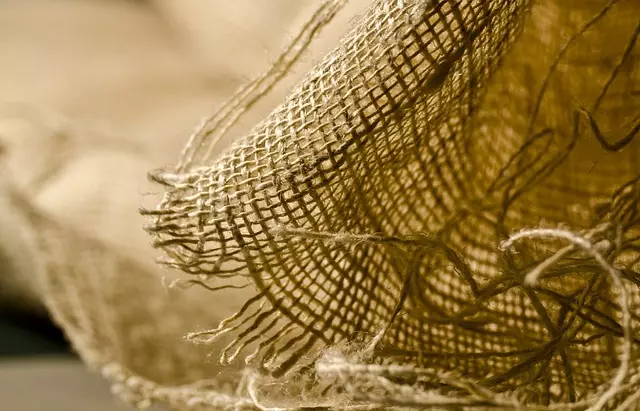Muscle soreness, particularly delayed onset muscle soreness (DOMS), is a frequent issue for athletes and those engaging in intensive exercise, which can hinder training and well-being. Kratom, derived from the Mitragyna speciosa plant, has gained attention as a natural remedy for this condition due to its active alkaloids, mitragynine and 7-hydroxymitragynine, that may interact with opioid receptors for pain relief. To effectively use kratom crushed leaf for muscle soreness relief, it's recommended to start with a conservative dose to determine individual sensitivity, with strains like Red Bali and Red Maeng Da often favored for their analgesic properties. For best results, integrate its use with adequate rest, proper nutrition, and hydration as part of a holistic approach. It's crucial to consult healthcare professionals before incorporating kratom into your wellness routine, especially if you have pre-existing health concerns or are taking other medications. Adhering to safe dosing guidelines and combining kratom with comprehensive recovery practices can make it a beneficial tool for managing muscle soreness.
Muscle soreness can be a significant hindrance to an active lifestyle, often stemming from intense exercise or physical strain. Kratom, a tropical evergreen tree’s leaves, has garnered attention for its potential role in muscle relief. This article delves into the intricacies of muscle soreness and examines kratom’s efficacy in alleviating discomfort. We will explore the best practices for utilizing kratom crushed leaf, offering a practical guide on “how to use kratom crushed leaf” for effective relief strategies. Join us as we navigate the intersection of natural remedies and athletic well-being.
- Understanding Muscle Soreness and Kratom's Role in Relief
- Effective Strategies for Muscle Soreness Relief Using Kratom Crushed Leaf
Understanding Muscle Soreness and Kratom's Role in Relief

Muscle soreness, often experienced as delayed onset muscle soreness (DOMS) after intense physical activity, can be a significant hindrance to an individual’s training regimen and overall well-being. This phenomenon is attributed to microtrauma in the muscles, which leads to inflammation and pain. Understanding the mechanisms behind muscle soreness is crucial for developing effective relief strategies. Enter kratom, a natural supplement derived from the leaves of Mitragyna speciosa, which has been traditionally used in Southeast Asia for its medicinal properties.
Kratom contains a variety of alkaloids, with mitragynine and 7-hydroxymitragynine being the most abundant and researched. These compounds are believed to interact with opioid receptors in the brain, leading to pain relief and other therapeutic effects. For those seeking muscle soreness relief, kratom can be particularly useful when used judiciously. The most effective way to use kratom for this purpose is by consuming the crushed leaf form, which allows for precise dosing and can be more potent than other forms like powders or capsules. Users typically report that the right dose of kratom crushed leaf can help alleviate muscle discomfort, potentially aiding in recovery between workouts or helping to manage chronic pain associated with overuse injuries. It’s important to note that while kratom may offer relief for muscle soreness, it should be used responsibly and as part of a broader recovery plan that includes rest, proper nutrition, hydration, and possibly other therapeutic practices such as massage or physical therapy. As with any supplement, individual responses to kratom can vary, and it’s always recommended to consult with a healthcare professional before incorporating kratom into one’s health regimen.
Effective Strategies for Muscle Soreness Relief Using Kratom Crushed Leaf

When encountering muscle soreness, individuals often seek natural and effective relief strategies. Kratom crushed leaf, derived from the Mitragyna speciosa tree, has gained attention for its potential analgesic properties. To effectively use kratom crushed leaf for muscle soreness relief, it’s important to understand proper dosage and preparation. Generally, users report positive outcomes from ingesting the crushed leaf either by directly consuming it, mixing it with a beverage, or encapsulating it for controlled dosing. For those new to kratom, starting with a small quantity, such as half a teaspoon, is advisable, and individuals should assess their tolerance before increasing the amount. It’s crucial to adhere to specific strains known for their pain-relieving effects, like the Red Bali or Red Maeng Da, which are often recommended for muscle soreness. Additionally, combining kratom with other wellness practices, such as adequate hydration, rest, and proper nutrition, can enhance its efficacy in alleviating discomfort. Always consult with a healthcare provider before incorporating kratom into your regimen, especially if you have existing health conditions or are taking other medications. Proper dosing, strain selection, and adherence to safety guidelines will help ensure that kratom crushed leaf serves as a viable option for muscle soreness relief.
Muscle soreness can be a significant impediment to one’s active lifestyle, often necessitating effective and accessible relief strategies. This article has explored the mechanisms behind muscle soreness and how kratom supplements might offer a natural pathway to alleviation. Specifically, we delved into the practical application of kratom crushed leaf, a form that many users find beneficial for their recovery processes. By understanding the correct dosage and strain selection, individuals can incorporate this botanical into their routine to help manage post-exercise discomfort. It is advisable to consult healthcare professionals before integrating any new supplement into your health regimen, especially given the nuanced nature of personal health responses to kratom. Nonetheless, for those seeking natural alternatives to conventional pain relief methods, kratom crushed leaf presents a promising option in addressing muscle soreness.






